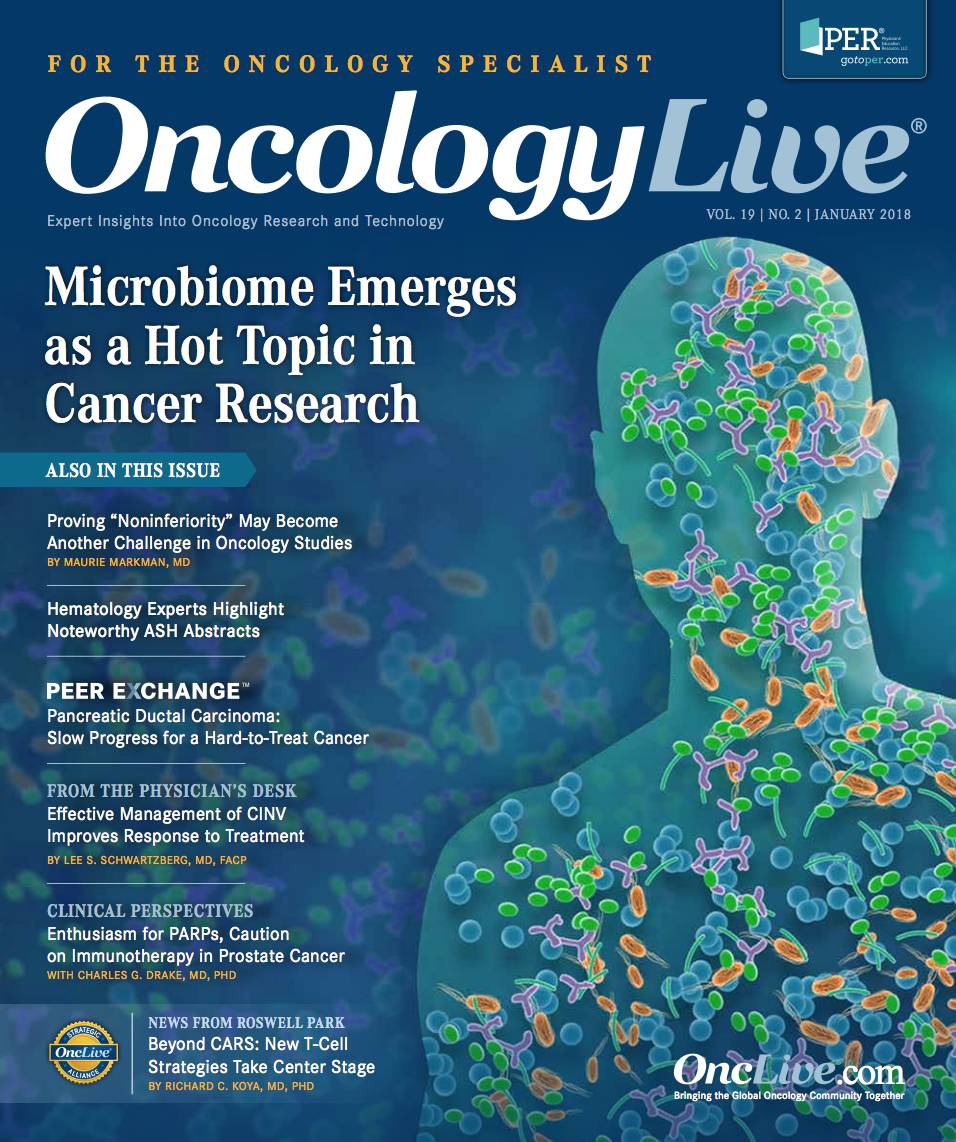Publication
Article
Oncology Live®
Beyond CARs: New T-Cell Strategies Take Center Stage
Author(s):
Recent advances in the understanding of the immune system are paving the way for new and effective approaches to treating cancer.
Richard C. Koya, MD, PhD

Richard C. Koya, MD, PhD
Associate Professor, Oncology
Associate Director, Center for Immunotherapy
Director, Vector Development & Production Facility,
Roswell Park Comprehensive Cancer Center,
Buffalo, NY
Recent advances in the understanding of the immune system are paving the way for new and effective approaches to treating cancer. This is highlighted by FDA approvals in 2017 of T lymphocyte—based adoptive cellular transfer (ACT) therapies that use chimeric antigen receptors (CARs) to target CD19, a protein that is expressed on the surface of tumor cells.
The Focus Shifts to New Targets
The T cells fueling these exciting therapies are created by transduction, in which a viral vector is used to induce the expression of a transgene. In the case of the 2 newly approved therapies, tisagenlecleucel (Kymriah) and axicabtagene ciloleucel (Yescarta), the transduction payload consists of single-chain variable fragments derived from an antibody that reacts against CD19. The transformed T cells develop added signaling domains that ensure activation of T cells once they find their target cancer cells. Because CD19 is expressed on the surface of B-cell leukemia/lymphoma cells and has limited expression in normal cells (mainly B lymphocytes), it was considered an ideal target.The race to develop CAR T cells now focuses on discovering additional targets. Finding proteins on the surface of tumor cells that are not present in normal tissues has been extremely challenging—especially in the case of solid tumors—decreasing the prospects for a safe CAR therapy for solid tumors. However, another modality of engineered T cells has been in development, although it has received much less attention than CAR T cells: T-cell receptor T cell-based ACT (TCR-T ACT).
Present in T cells, TCRs are naturally occurring receptors that recognize, in a major histocompatibility complex context, peptides derived from chopped proteins that may include antigens specific to cancer cells. TCRs can recognize proteins that are not present in the plasma membrane—a requirement for CARs. This broadens the potential for targeting many more possible proteins found on tumor cells.
Various experimental therapies are under evaluation using the TCR T-cell platform. One strategy involves a special class of tumor antigens, cancer testis antigens (CTAs), which are expressed in various cancerous tissues but not in normal adult tissue (except for the testis), and these can be suitable target candidates for TCR-T ACT. Some notable examples of CTAs include NY-ESO-1, MAGE A4, and MAGE A10. As TCR-T clinical trials mature, we can look forward to the emergence of another wave of FDA-approved T-cell therapies for solid tumors.
Although T cells have an exquisite capacity to specifically recognize and kill cancer cells, developing effective cancer therapies that use that power of T cells is more complex than researchers would wish. To ensure their own survival, tumor cells frequently develop mechanisms to evade the immune system and co-opt the tumor microenvironment (TME). Many immunosuppressive mechanisms have been studied, including transforming growth factor (TGF)—beta, IDO, VEGF, and prostaglandin E2, as well as cellular elements such as regulatory T cells (Tregs) and M2 macrophages. Myeloid-derived suppressor cells, when present in the TME, also can efficiently dampen the activity of cytolytic T cells. Therefore, a new generation of therapies combining strategies to neutralize these immunosuppressive factors using T-cell ACT has been investigated intensively.
I’m part of a team of investigators at Roswell Park Comprehensive Cancer Center in Buffalo, New York, leading a recently opened trial for patients with advanced solid tumors to evaluate an NY-ESO-1 TCR T-cell therapy engineered with a dominant negative TGF-beta receptor (NCT02650986). The T cells are endowed with the ability to resist the immunosuppressive TGF-beta, which is present in higher amounts in the TME.
Remaining Hurdles and Opportunities
The phase I/II study seeks to enroll 24 patients aged 18 years and older with locally advanced or stage IV refractory solid tumors that express NY-ESO-1. In the first phase, patients will receive TCR therapy consisting of autologous peripheral blood lymphocytes transduced with an NY-ESO-1 reactive retroviral vector and TGF-beta—receptor tumorinfiltrating lymphocytes. The primary endpoint is to evaluate the safety and feasibility of this approach. Secondary objectives include analyzing the persistence of the gene therapy in patients’ peripheral blood samples, response rates, and progression-free survival. When this trial is completed, we hope to establish a new T-cell therapy paradigm that employs this unique combination of TCR plus TGF-beta blockade.Another major hurdle in the ACT field is the poor persistency of T-cell activity following infusion. The transgenic cells seem to decrease significantly in number after a few months, and the remaining cells show characteristics of exhausted or dysfunctional T cells.
To tackle this issue, many investigators in the field are looking into the administration of different T-cell phenotypes—for example, T cells that are less differentiated or have better potential for expansion. These include central memory, naïve, or even stem cell memory T cells. Some protocols under development involve cytokine cocktails, small molecules, and cell sorting to generate beneficial T-cell profiles in vitro before reengineered T cells are infused back into patients. Another attractive strategy to combat T-cell exhaustion involves combining T-cell ACTs with immune checkpoint inhibitors, including blockade of PD-1/PD-L1 and CTLA-4 and, more recently, LAG-3 and TIM-3 receptors, among others.
T-cell ACT is a “living drug” that has finally reached the status of standard of care. As the development of better ways to boost the T-cell immune response moves toward clinical testing, we foresee more exciting and efficient new options for the treatment of cancer in the years to come.










